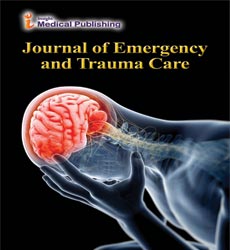Abstract
Paraspinal Compartment Syndrome in a Teenage Athlete
Background: Acute paraspinal lumbar compartment syndrome was first described in the early 1980s as a rare entity. Similar to other types of compartment syndromes, early diagnosis and appropriate management has shown to improve functional outcomes. Current literature continues to highlight cases of non-operative management despite persistent clinical symptoms, rhabdomyolysis, muscle atrophy on MRI, and delayed return to exertional activities. Objective: Discuss the presentation, diagnosis, and management of acute lumbar paraspinal compartment syndrome. Case Report: A 15-year-old male presented with a four day history of persistent lower back pain and rhabdomyolysis after completing cross fit training. A magnetic resonance imaging (MRI) was obtained which demonstrated diffuse bilateral paraspinal musculature inflammation. The patient was noted to have bilateral paraspinal tenderness with focal paresthesia to the right paraspinal region. Despite aggressive fluid resuscitation, the creatine kinase (CK) remained elevated. Neurosurgery spine consultation was obtained and due to progressively worsening pain, the patient was taken to the operating room (OR) for bilateral paraspinal fasciotomies and debridement of devitalized muscle. Intraoperatively, right greater than left paraspinal muscle necrosis was noted. On postoperative day 2 (POD), the patient returned to the OR for closure of the fasciotomy sites with plastic surgery. Serial creatine kinase trended down and eventually normalized. The patient was discharged home with no functional deficits. Conclusion: Acute lumbar paraspinal compartment syndrome is a rare entity that should be considered in the differential diagnosis in young athletes presenting with unexpected lower back pain associated with severe rhabdomyolysis. Treatment involves muscle compartment release, possible muscle debridement, fluid resuscitation, and serial creatine kinase measurements.
Author(s): Jyoti Sharma, Elizabeth Kiselak, Javier Perez, Saraswati Dayal, Sanjeev Kaul and Martin Karpeh
Abstract | Full-Text | PDF
Share This Article
Google Scholar citation report
Citations : 42
Journal of Emergency and Trauma Care received 42 citations as per Google Scholar report
Abstracted/Indexed in
- Google Scholar
Open Access Journals
- Aquaculture & Veterinary Science
- Chemistry & Chemical Sciences
- Clinical Sciences
- Engineering
- General Science
- Genetics & Molecular Biology
- Health Care & Nursing
- Immunology & Microbiology
- Materials Science
- Mathematics & Physics
- Medical Sciences
- Neurology & Psychiatry
- Oncology & Cancer Science
- Pharmaceutical Sciences
